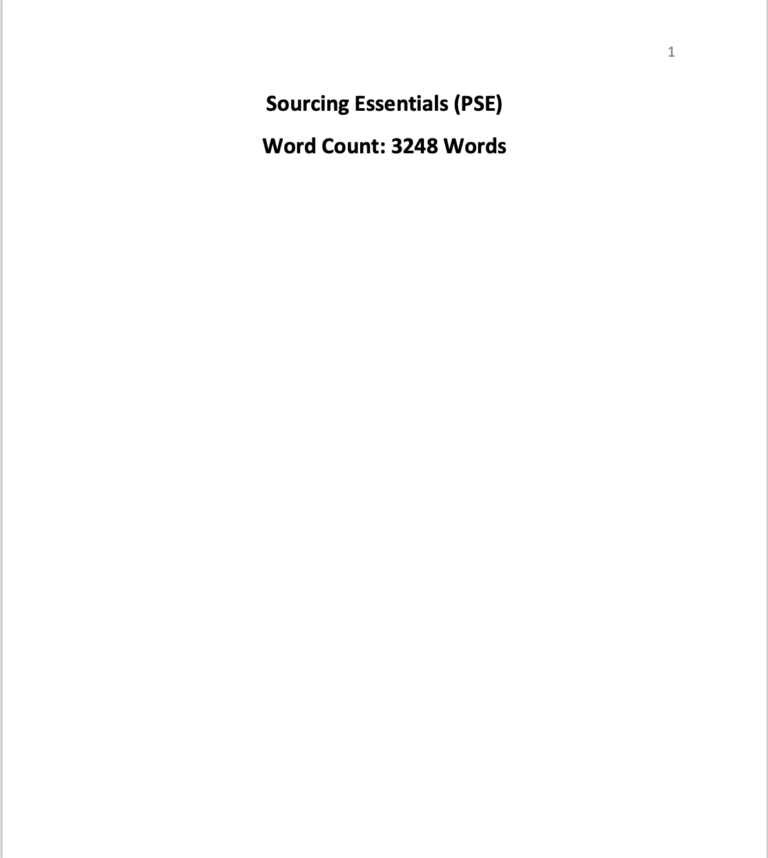(Solution) 5C003 reasons why this is important and the consequences of people practitioners not being willing or able to influence others (AC 1.3)

New User Gifts
First Order Deal get Ksh 200 Off.
£ 20.00 Original price was: £ 20.00.£ 10.00Current price is: £ 10.00.
Payment Methods:
Description
Solution
1.3 Importance of People Professionals
Informed Contributions:
People professionals must contribute to discussions in an informed manner to provide valuable insights and evidence-based recommendations. When people practitioners are knowledgeable about current trends, best practices, and legal requirements, they can guide strategic decision-making that aligns with organisational goals. For example, during discussions about implementing a new performance management system, being informed allows a people professional to highlight potential challenges and suggest effective solutions as evidenced by Kadam (2017). This informed approach ensures that decisions are well-grounded, reducing the risk of implementing ineffective or outdated practices.
Clear Communication:
Clear communication is essential for conveying complex ideas in a way that is easily understood by others. When people professionals articulate their points clearly, they minimise misunderstandings and ensure that their message resonates with the audience as evidenced by CIPD (2023a). This is particularly important in diverse teams where members may have different levels of familiarity with HR concepts. For instance, explaining the benefits of a flexible working policy in clear terms helps stakeholders understand its impact on employee well-being and productivity, increasing the likelihood of buy-in.
Confident Expression:
Confidence in discussions helps people professionals assert their viewpoints and advocate for necessary changes ( Kaplan Professional, 2015). Confidence demonstrates expertise and conviction, which can persuade others to consider and support their proposals. For example, confidently advocating for a new diversity and inclusion initiative can help overcome resistance and secure leadership commitment. Confidence also builds trust and credibility, positioning the people professional as a reliable advisor.
Consequences of Failing to Influence:
If people professionals are not willing or able to influence others, several negative consequences can arise. Without influence, important initiatives may be sidelined, leading to missed opportunities for improving organisational outcomes ( Bosley, 2023). Additionally, the absence of informed, clear, and confident contributions can result in poor decision-making, potentially leading to unethical practices, increased grievances, or legal challenges such as employment tribunals. Furthermore, a lack of influence can diminish the perceived value of the people practice profession, resulting in lower levels of employee engagement and a weakened organisational culture.
Please click the following icon to access this assessment in full
Related Papers
(Solution) Oakwood Assessment ID / CIPD_3CO04_24_01 3CO04 Essentials of people practice
(Solution) CIPD L5 5CO01 – Organisational performance and culture in practice
(Solution) Level 5 5HR01 Employment relationship management Assessment ID / CIPD_5HR01_22_01
(Solution) CIPD 7C004 Task 1.3 Research Question
(Solution) CIPD 7C004 Task 4.3: Reflective Analysis
(Solution) CIPS Sourcing Essentials Assessment
- In this assessment, sourcing approaches have been identified and holistically reviewed. This is in line with RCU organisation IT spend category. This is further compared with payment services, document management category which is office suppliers and postal services.
- For evaluating the identified spend categories, various tools have been selected which are Kraljic Analysis Tool, Mendelow’s Analysis Tool for Stakeholder analysis and the Maslow Hierarchy of needs.
- Further, by using the SWOT analysis, the internal and external factors of the sourcing have been selected. A further analysis by use of Peter Block Grid’s has been applied to evaluate the interests of stakeholders to source appropriate position.
- The findings indicate that RCU adopts the best sourcing approach based on their needs.
- Finally, by using Carter’s 10Cs model, the best practice for pursuing suppliers appraisal has been provided for IT spend category.


